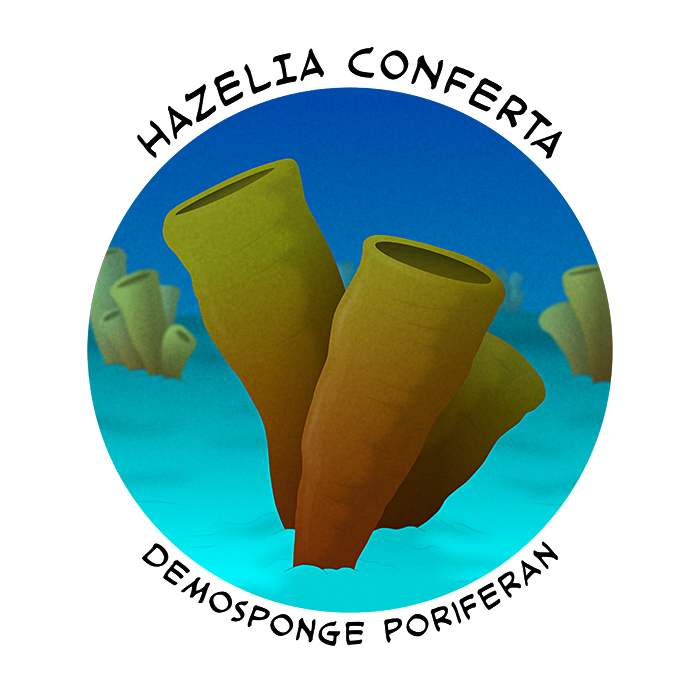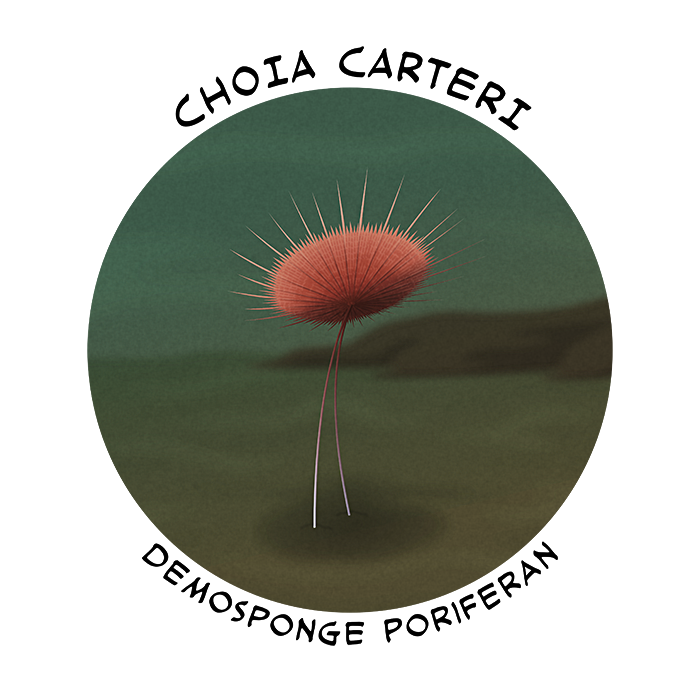Sponges are one of the very oldest branches of the animal family tree, originating sometime in the Proterozoic Eon. Fossils are known from at least 600 million years ago, and their ancestry probably goes back even further back than that into the Cryogenian Period or late Tonian Period, at least 750 million years ago.
So it’s not especially surprising that sponges were already common and highly diverse in the Cambrian, with representatives of the major modern groups all present – demosponges, glass sponges, and calcareous sponges.

Hazelia was a very common demosponge known from the Chengjiang biota in southwest China (~518 million years ago), the Burgess Shale in Canada (~508 million years ago), and the Marjum Formation in Utah, USA (~505 million years ago). Different species within this genus varied widely in appearance, including cups, cones, branched forms, and nodular shapes.
Hazelia conferta here from the Burgess Shale was one of the cone-like forms, growing up to around 10cm tall (4″).

Choia was another example of a demosponge known from the same locations as Hazelia, but it was very different-looking. Shaped like a disc bristling with radiating spines, it was originally thought to simply rest on the seafloor – but more recent discoveries suggest it attached itself to the bottom using a couple of long thin stalk-like spines, and lived suspended up in the water current like a little underwater kite.
Choia carteri here, also from the Burgess Shale, reached a diameter of about 5cm (2″).
Both of these sponge genera were successful enough to survive throughout the Cambrian and into the Early Ordovician, until at least 475 million years ago – although its not clear whether the youngest fossils indicate these animals were still widespread by that time or if they represent isolated relict populations of Cambrian-like ecosystems.
